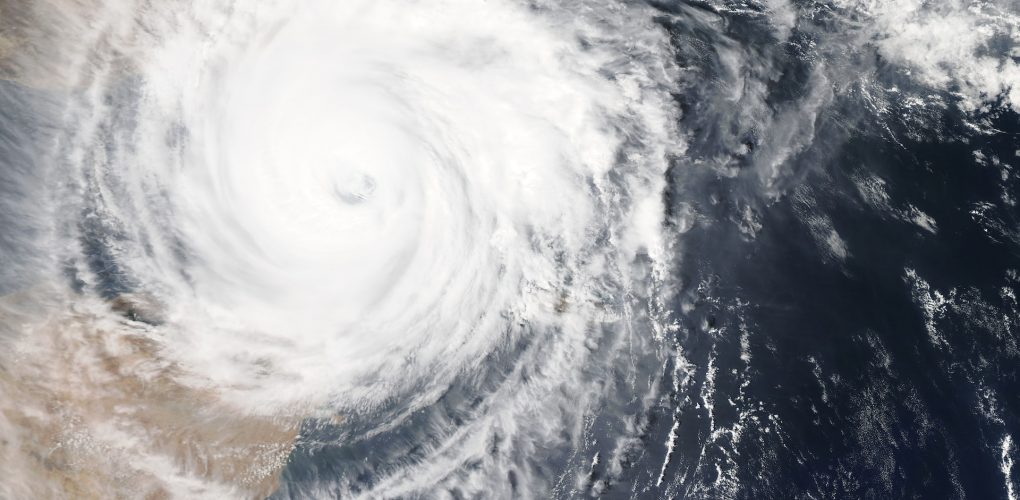Bridge engineers are more aware than ever of the impact that extreme weather can have on bridges and the roads that connect them. The last several months — and years — of intense rains, heat, wildfires, and winds have resulted in significant harm to bridges. Structures designed decades ago in more normal weather conditions are reacting and performing in unexpected ways. Roads are buckling. Metal is twisting. Piers are being washed away.
Engineers understand the potentially devastating impacts that today’s weather could have on not only the structures themselves but also the lives of people who cross them regularly. They’ve had to be flexible in the face of adversity in the past, and they must continue to do so now.
This article explains how the bridge industry has historically handled extreme events and provides a roadmap for dealing with them in the future.
Extreme circumstances: Historical impact on bridge design
Engineers in the United States follow design guidelines developed by the American Society of Engineers, the American Association of State Highway and Transportation Officials, state Departments of Transportation, and others to design structures for extreme weather and other stressors.
There is a long history of adjusting these standards to handle extreme loading and events. Engineers have had to be creative and flexible in the face of adversity.
- In 1938, the Tacoma Narrows Bridge collapsed within months of opening. It started twisting and bucking during a wind storm. Then it completely broke apart and failed. The event forced engineers to rethink how they build and test suspension bridges.
- In 1971, more than a dozen bridges were seriously damaged during a 6.6-magnitude earthquake, killing more than 60 people. Engineers at the time examined what went wrong so they could improve existing bridges and build more earthquake-proof ones in the future. They found that earthquakes could shake bridges off their support piers. Experts decided to add metal restraining cables to prevent failures.
- After 2005’s Hurricane Katrina, engineers discovered that the unprecedented waves caused by the storm had a significant impact on bridges. Several in New Orleans were damaged or destroyed by moving water. Since then, engineers have done wave modeling to ensure that bridges can hold up if waves from hurricanes hit them. Engineers are also now designing higher bridges that can better withstand the forces of extreme storms.
In each of these cases, designers and engineers learned from their mistakes and found ways to build more resilient bridges.
Designing and building stronger bridges
The basic materials used to construct bridges are high-string steel, carbon steel, and concrete. While these are all strong materials, time and time again, earthquakes, wildfires, and storms have proven that they can’t withstand everything.
The critical thing that engineers must do is include backup systems in their designs to protect against the known and unknown forces that can impact structures. A bridge backup system is comparable to those added to airplanes. Engineers build planes that they know will fly. Then, they add countless additional redundancies to ensure that they can withstand anything. For instance, an aircraft can fly with a single engine, but the designer adds three more to protect passengers should one, two, or three fail.
Similarly, cable-stayed bridges are built with many diagonal steel stays to support the roadway. In most cases, if one or more ends up out of commission, the bridge may sustain damage but it will not fail.
As more and more extreme events are impacting bridges, engineers will continue to learn from them and build structures that can withstand them by adding more redundant features. This is especially important as the unexpected becomes more expected every day and 500-year storms seem to happen annually.
The importance of testing bridges
For almost a century, bridge designers built models of viaducts to figure out how they will withstand waves, strong winds, heavy rains, and earthquakes. This was an effective tactic but issues often got missed. A bridge model tested on a shake table isn’t the same as a real bridge experiencing the up-and-down forces and twisting motions of an actual earthquake.
In recent decades, computers have made testing structures more robust and accurate. It’s now easy for bridge experts to introduce the forces from the latest weather events into their modeling to better understand how bridges react to them. It’s also relatively simple to test new design elements in the models to find better solutions to withstanding today’s weather.
Weather’s impact on aging infrastructure
While building new bridges that can withstand extreme forces is a good thing, it doesn’t address the more than 600,000 existing bridges across the United States. Older bridges are designed to previous standards, making them more vulnerable and at greater risk of damage or collapse during an extreme natural event than new viaducts. Add to this the fact that severe weather causes wear-and-tear to these structures. For instance, bridges in hurricane-prone areas are significantly impacted by the corrosive saltwater, even in weaker hurricanes.
Proper inspections and maintenance are critical. Leveraging tools like Bridge Master’s flexible lifts make it possible for inspectors and crew to access hard-to-reach sections of bridges that could be impacted by extreme weather. Inspectors can quickly identify issues so they can be dealt with as soon as possible. (Actually getting bridges repaired is more possible today than in the past because of the infusion of cash provided to states by the Biden infrastructure bill.)
Bottom line: Bridges and extreme weather
Extreme weather is having an equally extreme impact on bridges and roadways across America. Inspectors, engineers, designers, contractors, maintenance teams, and everyone working in the bridge industry must be more flexible than ever to build robust structures, inspect them regularly, do additional maintenance, and strengthen existing structures.
It will take creativity, diligence, and an eye to the future to make it through today’s storms, wildfires, wind events, earthquakes, and other extreme circumstances — and beyond.

